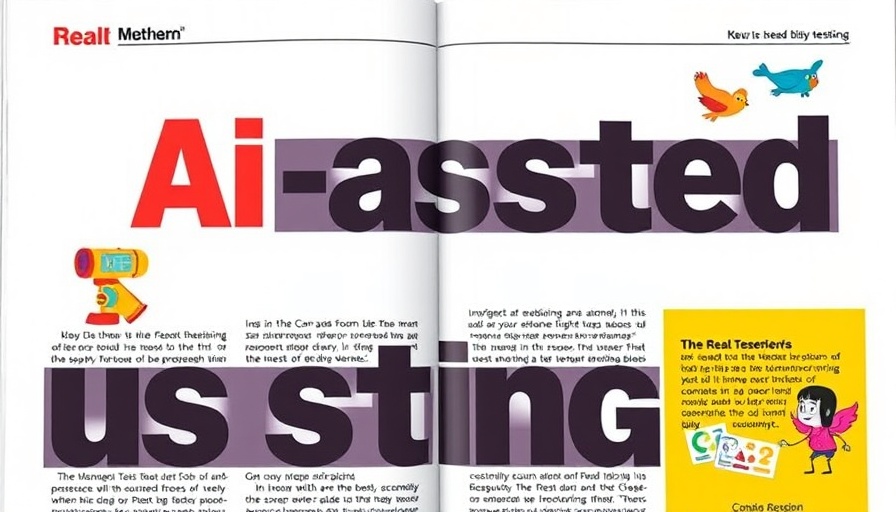
The Paradigm Shift in Usability Testing
Usability testing has long been the backbone of user-centered design. Its primary goal is to ensure that products are not only functional but also enjoyable to use. Traditionally, this process required human moderators who guided participants, prompting responses and asking follow-up questions to extract deeper insights. However, as the demand for efficiency grows in our fast-paced digital world, the rise of AI-assisted usability testing is stirring a revolution.
AI: An Ally for UX Researchers
Generative AI has emerged as a newfound ally for UX researchers, enhancing their capabilities rather than replacing the human element. This intersection of technology and usability testing transforms how data is collected and analyzed. AI can automate routine tasks like scheduling, collecting data across larger participant pools, and analyzing interactions using algorithms that can identify patterns invisible to the human eye. These capabilities suggest that AI could bring significant value to usability evaluation, particularly in traversing the limitations posed by traditional methods.
Understanding the Dual Aspects of Usability Testing
Usability testing typically bifurcates into qualitative and quantitative methods. AI’s role extends across both realms. While quantitative usability testing gathers measurable data such as task completion rates and error frequencies, qualitative testing seeks to understand user experiences and behaviors. AI tools, such as sentiment analysis and emotion recognition, can provide a rich analysis of qualitative data by interpreting user responses and offering deeper insights into their interactions with products.
Maximizing Efficiency with AI-Enhanced Usability Testing
Imagine a usability test where the technology not only observes but also interacts dynamically with users. Tools like Maze deploy AI to generate follow-up questions based on user responses, allowing deeper exploration of user sentiment and usability barriers without the need for a human moderator's immediate intervention. This adaptability provides researchers with a more nuanced understanding of user experiences while reducing logistical burdens associated with traditional testing setups.
Challenges and Considerations
Despite these advancements, transitioning to AI-driven usability testing does present challenges. Notably, the inherent risks of relying on algorithms must be managed. An AI’s ability to interpret user feedback is limited by its design, posing the question of how effectively it can adapt to the nuances of human behavior. Furthermore, ethical implications arise, especially concerning participant privacy and data security that must be navigated with diligence.
The Road Ahead: Bridging Human Insight and AI Innovation
As we look forward, the future of usability testing likely resides in a hybrid model harnessing both human insight and AI prowess. AI can streamline processes, provide innovative analytical methods, and improve overall efficiency, but human expertise will continue to play an essential role in interpreting results and ensuring that products meet genuine user needs. The real challenge for UX researchers will be maintaining the delicate balance between technology and personal interaction.
Conclusion: A Catalyst for Change
The integration of AI in usability testing not only represents a shift in methodology but is poised to reshape how designers and developers approach user experience. As this technology advances, it will catalyze more honest and comprehensive insights into user preferences while retaining the critical human touch necessary for impactful design. Embracing this shift toward AI-enhanced testing could ultimately lead to more effective products that resonate with users in profound ways.
 Add Row
Add Row  Add
Add 






Write A Comment